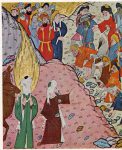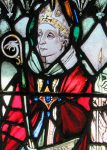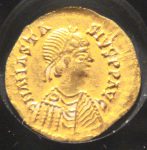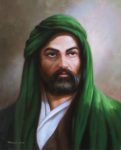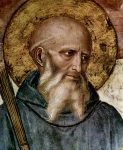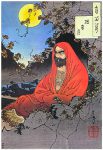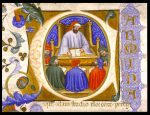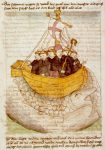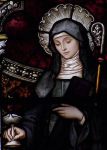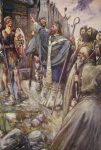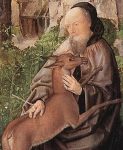Military leader. He won the Holy Land of Palestine for Islam and also opposed Ali, the founder of the Shiite branch of the religion.
Muslim caliph. He became the first caliph after the prophet's death.
Christian missionary, Saint. The Celtic monasteries of Iona (from which he came) and Lindisfarne (which he founded) became famous as beacons of culture, art and learning in a dark and violent time.
Wife of Mohammed. By supporting her father Abu-Bakr's claim to be the first Caliph and opposing Ali, the prophet's son-in-law, she became identified with the Sunni rather than the Shia branch of Islam.
King of the Visigoths. He defended Arian Christianity, but was defeated by Clovis, the king of the Franks and father of Charlemagne, which dealt a fatal blow to Arianism, the doctrine that Christ and God differed in some respects.
Fourth caliph of Islam, cousin of Mohammed, and husband of the Prophet's daughter, Fatima. He was assassinated, but his life gave birth to the Shia branch of Islam (contrasted to the Sunni branch). The Shia branch also later gave birth to Sufism, a mystical interpretation of Islam.
Poet. His Gododdin relates the epic defense of Britain against Saxon invaders. It celebrates courage, struggle, and the lost Celtic civilization also immortalized in Mallory's Morte d'Arthur.
Legendary Arab figure. He was reputedly the son of a Bedouin chief and a black slave, who grew up to be a fierce warrior as well as an important Arab poet. The later Romance of Antar portrayed him as an exemplar of the highest Bedouin ideals of courage, hospitality, generosity, and strict adherence to "the code of the desert."
Legendary king. Arthur is said to have valiantly defended his Celtic and Christian realm against pagan Anglo-Saxon invaders. His court at Camelot, with its famous "round table" of dedicated knights drawn from all over Europe, came to represent all the finest ideals of courtly love, of honour, of self-sacrificing service to God, country, and humanity, of knightly chivalry, and of mystical devotion to God's Holy Grail. Although there are references to Arthur by a variety of Medieval writers, the most complete account is Sir Thomas Malory's Le Morte d'Arthur, written in the 15th century nearly a thousand years after Arthur is supposed to have lived.
Poet and thinker. He wrote important works on ethics and conduct as well as on Hindu religious themes and on language.
Monk. He traveled from India to China where he met with the Emperor and planted the seeds of Zen Buddhism, emphasizing meditation and intuitive modes of knowledge. From there, Zen spread to Japan where it flourished.
Philosopher and statesman. A powerful figure in Italy, he fell out with the monarch, was imprisoned and tortured to death. He translated Porphyry and Aristotle, giving medieval Europe the classic texts on logic. While in prison, he wrote the Consolation of Philosophy, one of the most famous works of philosophy, which reiterated traditional stoic themes of attaining happiness by reining in the emotions, and especially the emotion of desire.
Monk. He was a legendary sea voyager.

